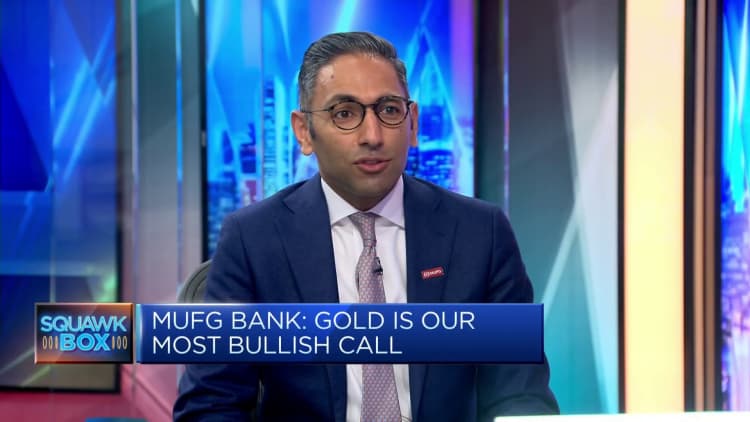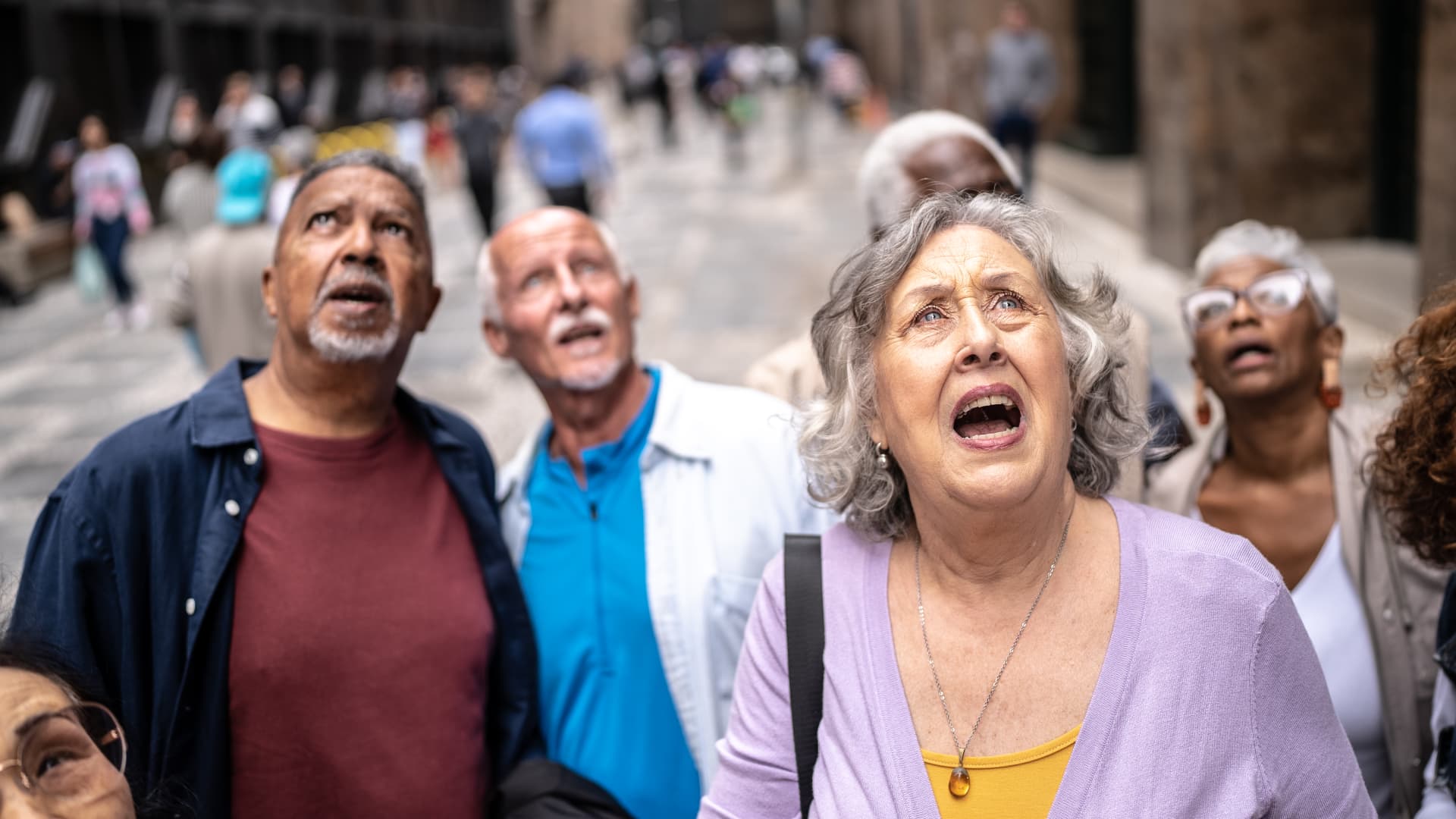Fg Trade | E+ | Getty Images
Among the cans of tuna and flashlights in doomsday preppers’ closets, there is an increasingly popular staple — gold bars.
The recent rise in value of the yellow metal is not just another chapter of favorable economic conditions for the asset, experts say.
People’s interest in gold — and silver, too — reflect deep anxieties about our society and its future.
“People are looking for permanence in a crumbling world,” said Timothy Morton, a philosopher and ecologist.
More from Personal Finance:
Why gas is so expensive in California
Credit card users face ‘consequences’ from falling behind
After Biden praises progress on inflation, economists weigh in
To that point: Costco last year began selling 1 ounce gold bars for around $1,900; they sold out within hours. The retail warehousing giant sold more than $100 million of the precious metal in its first fiscal quarter, it said, and has now added silver coins to its shelves, too. Experts say its target audience for these products likely include at least some of the same people who’d consider buying its $6,000 doomsday prep kit, which comes with 600 cans of food.
“Lots of people are more confident that a massive disaster is impending than that American prosperity will continue,” said John Hay, the editor of “Apocalypse in American Literature and Culture” and an associate professor at the University of Nevada.
“Tangible goods and products can feel more secure than promises and assurances,” Hay said.
Indeed, one of the chief doomsday fears is that the global economy will collapse, rendering all conventional assets, from government bonds to real estate, worthless, said James Berger, a senior lecturer at Yale University who teaches courses on apocalyptic literature and film.
Gold tends to gain value when people lose faith in banks and money, as it did in the Great Recession. Earlier this month, the gold contract for April settled at $2,126.30 per ounce, the highest level since the contract’s creation in 1974.
Even financial advisors and investment experts can sound dire when talking about gold.
William Bernstein, author of “The Four Pillars of Investing,” mostly dismissed the metal as a serious investment, pointing out that it has risen around just 1% a year, on average, over the past century.
Still, Bernstein said in a recent interview with CNBC, that a small allocation to the metal was useful insurance against “an economic catastrophe.”
Gold, nostalgia and the end of the world…
At the heart of people’s apocalyptic fantasies is nostalgia, Berger said.
Many preppers feel “deeply disturbed by the complexity and ambiguity of modern life,” he said.
“Gold represents a traditional, pre-industrial, pre-modern-finance form of wealth and exchange,” Berger said, adding that its “simplicity, solidity and ancient tradition” appealed to people’s desire for a vanished cultural stability.

Hay, who grew up in the Rust Belt, said he’s well aware of the feeling that “the prosperous days belong to the past.”
“In the United States, people are very worried about decline — that the future will be worse than the present,” Hay said.
More than 70% Americans say the country is headed in the wrong direction, according to a NBC News poll at the end of 2023.
When everything else is going down the tubes, gold is the one thing that’s likely going to do well.
William Bernstein
author of “The Four Pillars of Investing”
“The turn toward gold is like the turn toward authoritarian leaders, toward the ideal of someone who knows what is true and right and who has the courage to return a nation to its former truth and greatness,” Berger said.
“Make America gold again!” he joked, referring to former President Donald Trump’s nostalgic campaign slogan.
Trump has called for returning to the gold standard and, at least at one point, owned up to $200,000 of the metal, reports found.
…and climate change denial?
To be sure, fears over the world’s future are hardly baseless.
A structure is engulfed in flames as a wildfire called the Highland Fire burns in Aguanga, California, on Oct. 30, 2023.
Ethan Swope | AP
And then there’s climate change.
“People have always been afraid of the end of the world, but what makes this special is that the Earth could in fact return to weather we haven’t seen since the Triassic period,” said Morton, the philosopher and author of the upcoming book, “Hell, In Search of a Christian Ecology.”
Morton describes global warming as a “hyperobject,” an idea that is too big for us to understand, and he believes that the purchases of precious metals feed into denial about climate change.
“Unlike stocks and paper money, we dig them right out of the earth, so they symbolize the way the planet has seemed to us, for thousands of years — that it is for humans to extract value from.”
With the risks of global warming only rising, he said, “people are holding on to these symbols for dear life.”

